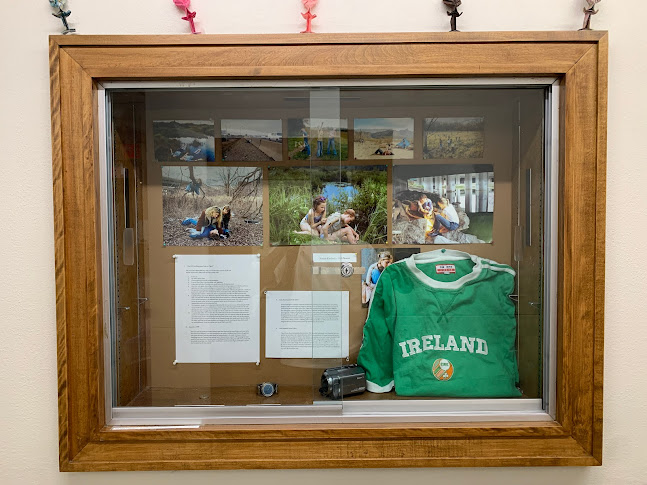I can’t remember the first I encountered Justine Kurland’s Girl Pictures, which is ironic for photographs so steeped in memory. Like my memories of childhood, the photographs possess the duplicity of feeling safe and warm like folk tales, but also post-industrial, distant, and anonymous. The collection, spanning from 1997 to 2002, realises this duplicity largely through the wide array of young women navigating geographies largely absent from the real world. Who, or perhaps, what are they running from? The landscapes Kurland’s subjects find themselves range from Connecticut to Arizona, yet in spite of the wide array of locations, she seems to elicit the same sentiment from all of them. Indeed, across these photos are similar shocks of industry on bucolic locations: empty woodlands that back onto highways, gutted carcasses of cars, railway embankments, satellite stations, concrete enclaves repurposed into dwellings for the subjects in the photographs. In this world, Little Red Riding Hood doesn’t even have a grandmother, only a commune of girls who cook frogs under interstate bridges.
I grew up with a lot of media and text that gave treatment to the concept of ‘boys living in their own world’. The stuff I did read tended to be a lot of the bildungsroman, often boycentric, literature from Huck Finn to Catcher in the Rye to ‘Araby’. I wouldn’t have ever come across anything like Girl Pictures to even disregard it. So to now, all these years later, claim my memories of boyhood in the context of Girl Pictures–a collection that focuses on the story of communities of young women–feels wrong. If I wanted to perhaps see myself in a photograph, I would turn to Jamie Hawkesworth’s Preston Bus Station or Town to Town by Niall McDiarmid. My interest instead is rooted in the ‘in-between’ space Kurland’s landscapes occupy, the fringe areas of wilderness nestled between suburban and urban areas, both of which are always haunting the photographs somewhat. In this vein, I don’t see how the photographs could be described as pastoral; the threat of industry is too present, often serving as the ‘thing’ the girls seem to be running away from. Since the subjects in Girl Pictures are all in their mid-to-late teens, this ‘in-betweenness’ also elicits the pre-adolescent feeling of being lost between agency and passivity. In part, this is also thanks to how I see the camera functioning: at first glance, Kurland’s lens appears as a passive observer in these photographs, yet the sensation I get from recognizing how intimate they are leads it to suddenly become incredibly pointed, over and over again for every photograph I view.
Not all of Kurland’s photos are absent of men or boys. I say men or boys because our ability to differentiate the two is challenged by the photographs, and this ambivalence of either/or occupies some of the photos in a way that reminds us of how male presences generally, especially in the settings Kurland documents, have room to impose violence and power onto a situation that previously appeared platonically insular. It also nods to boy or girlhood being somewhat defined by what it's not, as well as the moment in which one realises how that binary often comes down to a physically occupied space. In an interview with Matt Paweski, Kurland stresses how important landscape was in engendering this, why it was important to create (in her words) a sense of liminality in the suburban locations she shot. “A lot of art and writing exists in that contradictory space where it’s impossible to be what you’re presuming to be. There’s no way there’s going to be a girl utopia or a teenage-girl-runaway commune in the woods,” she said. “It’s this impossibility, but to imagine it is to maybe get a little bit closer to it.”
It makes perfect sense now, but it wasn’t until years after I first discovered Girl Pictures that I discovered all the photos were orchestrated. Today, the lens I observe them through vacillates from a documentarian to a storytelling one. It seems both a bizarre and impossible practice now, but Kurland would pick up girls off the street, dress them accordingly, and drive them out to these remote locations in order for, in her own words, the camera to operate as a ‘container for building a world’. Yet as much as this world feels folkish and inspired to find community and utopia, it also feels Clintonian and pre-internet, the whiteness and lack of phones demonstrative of this. If Kurland was to take the photographs now, phoneless and made up of the same subjects, I’m not sure they would enjoy the freedom of vacillating between story and documentary.
Do I apply the same logic to my stories that orchestrate themselves back into the past? What prevents the text I’m working with emit nothing but a potentially insidious sense of nostalgia? How can I prevent my stories replicate nothing but the mood of what I filmed on my family’s Sony Handycam, of Technicolor spaces that evasively skip between critiques? These are just some of the questions I have had to reckon with these photographs in mind.
Kurland’s photos stick with me here in Tuscon because their point-of-view introduces a space that allows for something more than just nostalgia, a space where I leave with more question marks than periods. I imagine my first reaction to Kurland’s photographs was an indulgent nostalgia via emulsion film–but today, I am struck by their point of view, the orchestration; the lives and landscapes not being shown.
Teddy Carolan, 10th April, 2023
In the Tiny Cabinet, I have included and responded to items that, for whatever reason, I took with me across the Atlantic from the UK. For those, you'll have to visit in person.


No comments:
Post a Comment